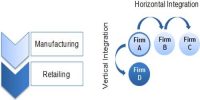Expansion of North American Free Trade Agreement (NAFTA)
North American Free Trade Agreement (NAFTA) which includes Canada, Mexico, and the United States of America went into effect in 1994; The United States of America and Canada historically have had various forms of mutual cooperation.
When the United states began its discussions with Mexico and Canada, it perceived a future effort to pull together North, Central and South America into an “Enterprise of the Americas”. Since the 1994 meeting in Miami, representatives from countries in the American except for Cuba have been working on a Free Trade Agreement of the American (FTAA) which encompasses much more than just tree trade but is not as comprehensive as the EU. The war on terror has slowed progress on the FTAA, and rising trade tensions between the U.S.A and Brazil in the WTO have also created difficulties. The countries are still working together to see if they can on agreement.
The expansion of trade agreements results in prolonged markets. Greater right of entry to foreign markets requires insistent trade strategy to lower tariffs and abolish distorting subsidies. The possible impact the U.S. could have on various markets is important, and the results of inaction could be destructive to the development of the U.S. economy. Other nations are forcefully pursuing agreements, and the U.S. is falling behind in this area.
The expansion of NAFTA is not a plain procedure. In order for all trade partners to gather benefits from the agreement, it obligation create value for U.S. firms. In the majority cases, developing or undeveloped countries will derive advantage from their association with the U.S..
















